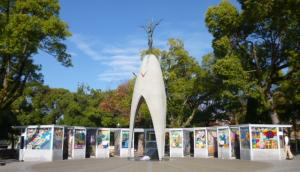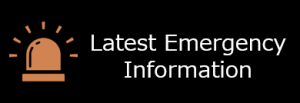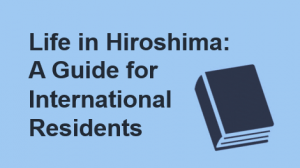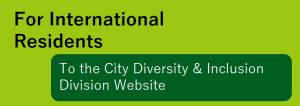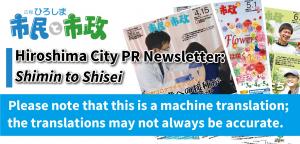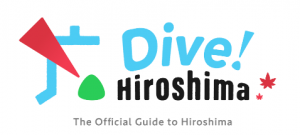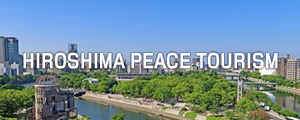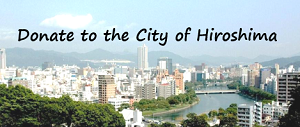本文
Hiroshima City's Initiatives for Peace
Article ID:0000009932
印刷ページ表示

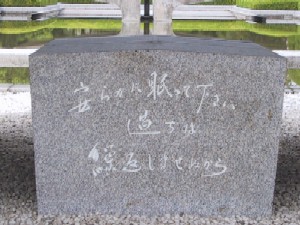
The City of Hiroshima's Peace Initiatives
Information about the background and basic concepts of the City of Hiroshima's peace initiatives can be found here.
Promoting Initiatives for the Abolition of Nuclear Weapons
- Fostering international and domestic public opinion towards the abolition of nuclear weapons
- Enhancing and strengthening Mayors for Peace
- Drawing up and disseminating the Peace Declaration
- International Symposium for Peace
- Hosting UN Disarmament Fellows
- Peace Education Webinar
- Training session in Hiroshima for United Nations tour guides
Detailed information about these initiatives can be found here.
Raising Awareness of Peace
- Promoting the Culture of Peace
- Children's Peace Assembly
- Peace Club
- Peace Night Hiroshima
- Hiroshima Peace Forum
- Honoring and transforming the wishes for peace folded into paper cranes
- Peace Message Program with products made from recycled paper cranes
Detailed information about these initiatives can be found here.
Conveying the Reality of the Atomic Bombing to Future Generations
- Preserving and conveying atomic-bombed buildings and trees for future generations
- Improving preservation measures for a collection of materials at Hiroshima Peace Memorial Museum
- Collecting atomic-bombed artifacts
- Peace study workshops
- Youth Peace Volunteer Program
- Hiroshima Peace Volunteer Program
- Supporting volunteer staff at Hiroshima Peace Memorial Museum
- Providing hibakusha testimonies to audiences abroad via video conferences
- Sharing hibakusha testimonies with students visiting Hiroshima
- Offering Atomic Bomb Legacy Successor presentations
- Training official Atomic Bomb Legacy Successors
- Promoting the Hiroshima for Global Peace Plan
- Management and administration of Hiroshima Peace Memorial Museum
- Creating peace study materials for small children
Detailed information about these initiatives can be found here.
Other Information
- Hiroshima Peace Memorial City Construction Law
- List of Major Activities (Chronological table)
- Outline of the Treaty on the Prohibition of Nuclear Weapons
Inquiries about this page
Peace Promotion Division
International Peace Promotion Department
Tel: 082-242-7831 // Fax:082-242-7452
Email: peace@city.hiroshima.lg.jp


